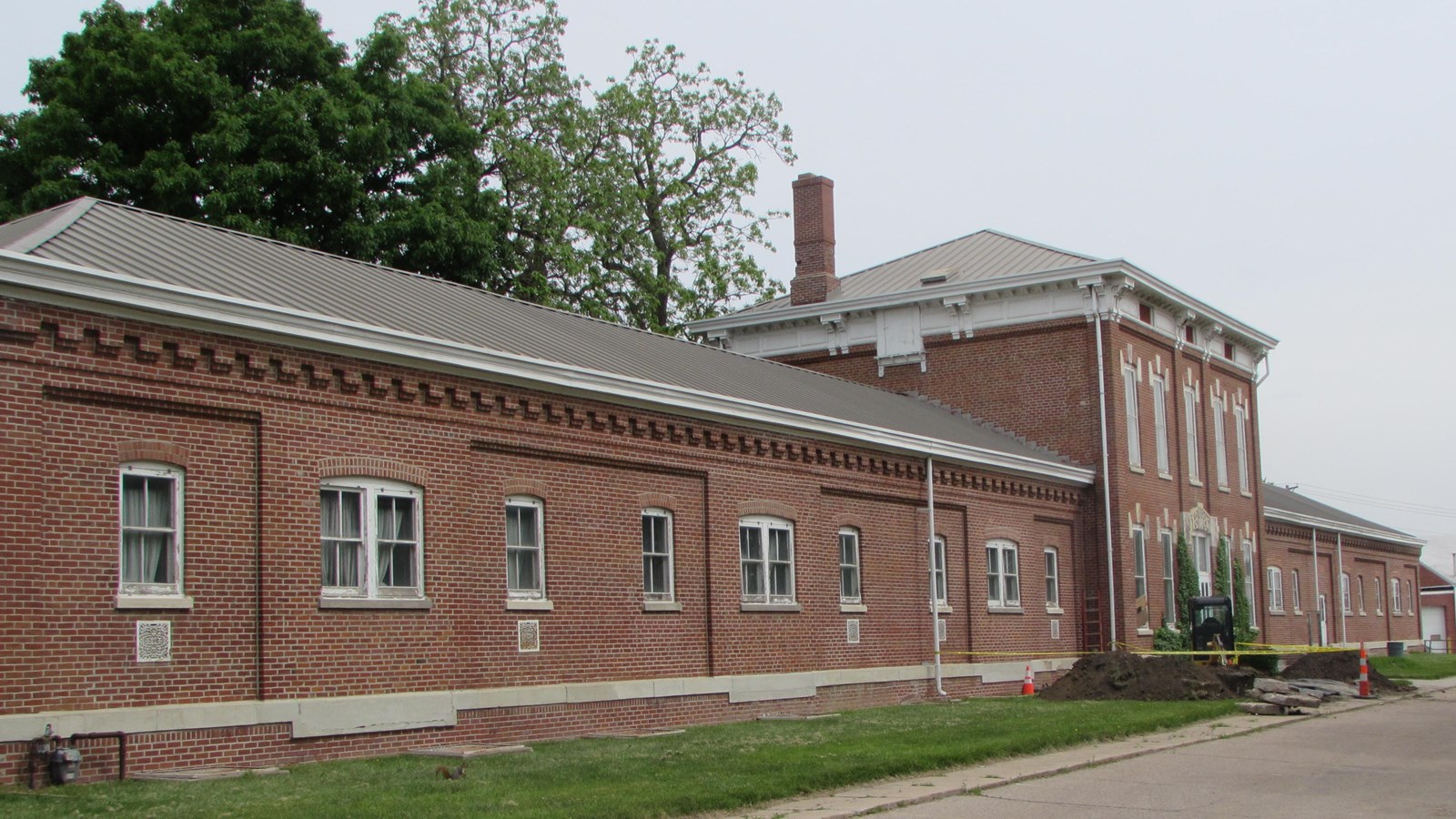Last updated: September 8, 2022
Place
Omaha Quartermaster Depot Historic District

David Calease, NPS
Quick Facts
Location:
Roughly bound by Hickory Street, 22nd Street, Woolworth Avenue, and 20th Street
Significance:
Military; Transportation; Architecture
Designation:
National Register of Historic Places
MANAGED BY:
Private Property Owner
Adjacent to the main line of the Union Pacific Railroad, the Omaha Quartermaster Depot Historic District occupies a seven-acre site in southwest Omaha. Constructed between 1880 and 1894, the Quartermaster Depot was used as a supply and distribution center for nearby military outposts.
The Omaha Quartermaster Depot is listed in the National Register of Historic Places for the important role it played in the nation’s military history. The US Army reestablished the Department of the Platte in 1866, creating an infantry and cavalry unit with specific orders to protect settlers traveling west to Colorado and beyond, as well as laborers constructing the Union Pacific Railroad. To supply these troops, a “Government Corral” was established on a site located at 13th and Webster (Mike Fahey) Streets in Omaha. The original depot obtained, stored, and dispersed supplies brought from the Missouri River on steamboats. In 1879 a new storehouse was ordered at what would become the Omaha Quartermaster Depot.
The Department of the Platte was phased out in 1898. The Quartermaster Depot saw no significant activity for nearly twenty years until over 278 million pounds of supplies passed through the depot in eighteen months to support the United States’ involvement in World War I. Following the Armistice, the Depot lay virtually dormant, until the 1930s when some buildings were used by the Civilian Conservation Corps (CCC) and others refurbished by the Works Progress Administration (WPA). With the outbreak of World War II, the Quartermaster Depot provided supplies to recruiting depots, served as a school for officers, and an automotive training center. Towards the end of the war, one building housed Italian prisoners-of-war. It later became a Reserve Center Facility for the Army Corps of Engineers.
The buildings within the Omaha Quartermaster Depot contain a high degree of architectural integrity maintaining the atmosphere of a late-nineteenth century military compound. Most of the buildings were constructed with heavy timber framing and exterior brick walls. While the vernacular brick structures remain, none of the depot’s wooden storehouses, stables, and sheds from the nineteenth century are extant. The layout of the structures was also clearly influenced by the Union Pacific Railroad.
The buildings were laid out parallel to the main tracks creating a linear setting and formal organization. Today the district is privately owned and currently undergoing renovations for future use.
The Depot is privately owned and undergoing renovations as a business park; the campus is open to the public as are some of the buildings, while others may be vacant/closed.
The Omaha Quartermaster Depot is listed in the National Register of Historic Places for the important role it played in the nation’s military history. The US Army reestablished the Department of the Platte in 1866, creating an infantry and cavalry unit with specific orders to protect settlers traveling west to Colorado and beyond, as well as laborers constructing the Union Pacific Railroad. To supply these troops, a “Government Corral” was established on a site located at 13th and Webster (Mike Fahey) Streets in Omaha. The original depot obtained, stored, and dispersed supplies brought from the Missouri River on steamboats. In 1879 a new storehouse was ordered at what would become the Omaha Quartermaster Depot.
The Department of the Platte was phased out in 1898. The Quartermaster Depot saw no significant activity for nearly twenty years until over 278 million pounds of supplies passed through the depot in eighteen months to support the United States’ involvement in World War I. Following the Armistice, the Depot lay virtually dormant, until the 1930s when some buildings were used by the Civilian Conservation Corps (CCC) and others refurbished by the Works Progress Administration (WPA). With the outbreak of World War II, the Quartermaster Depot provided supplies to recruiting depots, served as a school for officers, and an automotive training center. Towards the end of the war, one building housed Italian prisoners-of-war. It later became a Reserve Center Facility for the Army Corps of Engineers.
The buildings within the Omaha Quartermaster Depot contain a high degree of architectural integrity maintaining the atmosphere of a late-nineteenth century military compound. Most of the buildings were constructed with heavy timber framing and exterior brick walls. While the vernacular brick structures remain, none of the depot’s wooden storehouses, stables, and sheds from the nineteenth century are extant. The layout of the structures was also clearly influenced by the Union Pacific Railroad.
The buildings were laid out parallel to the main tracks creating a linear setting and formal organization. Today the district is privately owned and currently undergoing renovations for future use.
The Depot is privately owned and undergoing renovations as a business park; the campus is open to the public as are some of the buildings, while others may be vacant/closed.
